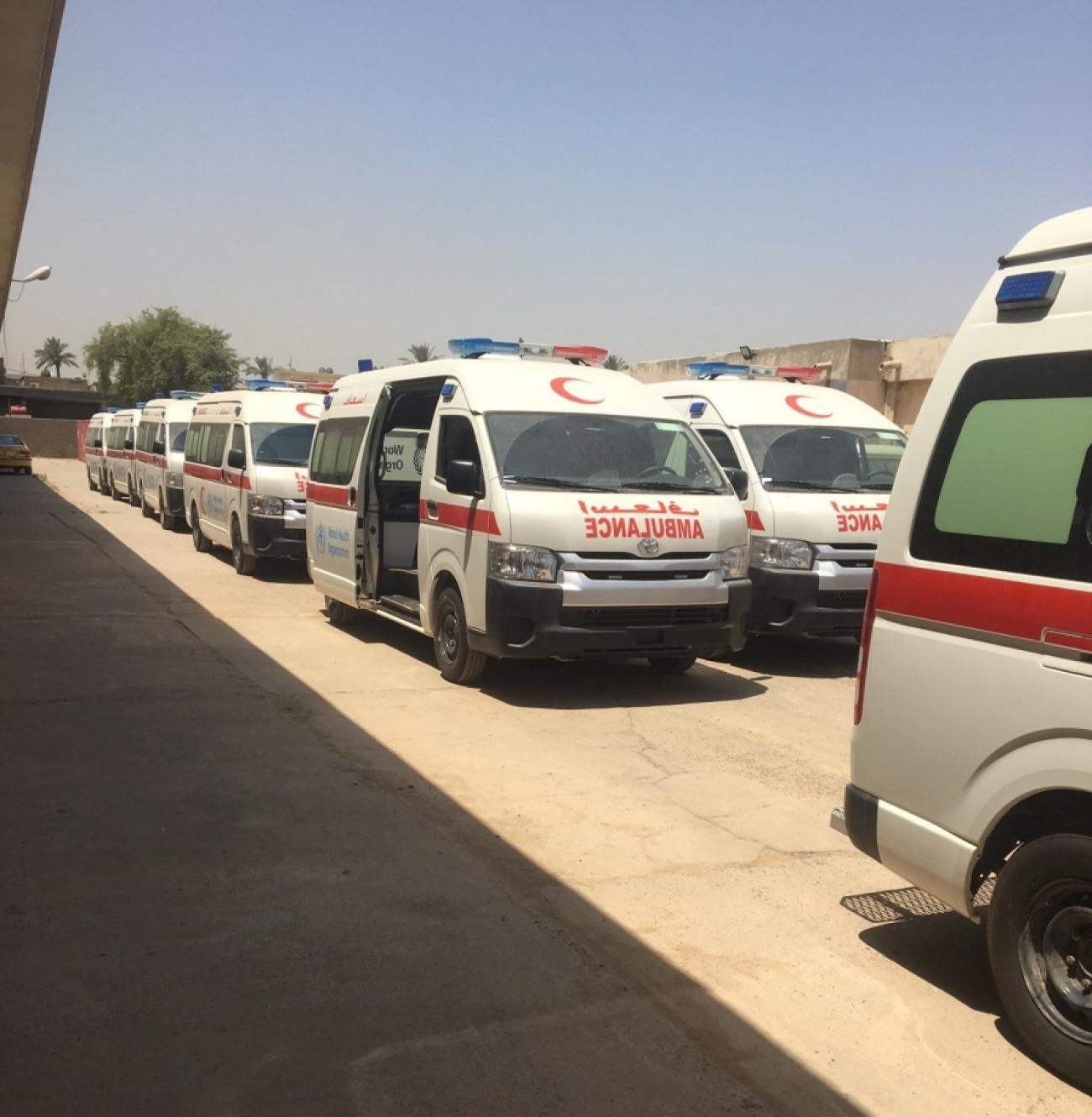20 new ambulances to strengthen referral pathway in under-recovery areas in Mosul, Anbar, and Kirkuk

The provision of health care in the conflict-torn governorates of Anbar, Ninewa, and Kirkuk
The provision of health care in the conflict-torn governorates of Anbar, Ninewa, and Kirkuk, has recently been augmented by additional 20 ambulances procured by the World Health Organization (WHO) to support the referral pathway and ambulatory services in the mentioned governorates.
The ambulances were handed over to the Ministry of Health in Baghdad to be distributed according to a priority plan suggested by a recent assessment conducted by WHO.
“An average of 1200 to 1500 patients a month are expected to benefit from this service in each targeted location,” said Hameed Ali, an ambulance service director in the Ministry of Health.
“The new donated ambulances will surely save more lives,” said Majeed, a paramedic who worked in one of WHO’s field hospitals in Mosul. “Ambulances staff has some pretty interesting stories to tell from Mosul response operations. You find out they saved a life of a family in Hamam Alil, raced time to get a shot-injured child to the closest trauma stabilization point in Bartella, or even helped a hard labor at a late hour amid clashes and exchange of fire. At least it helped emergency response succeed to a remarkable degree in places like Mosul.”
The ambulances were procured with the fund received from the United States Office of Foreign Disaster Assistance (OFDA) early this year and will be part of the overall referral pathway that WHO has been keen on strengthening to make it more responsive to the needs of the IDPs and returnees in affected governorates.
Analyzing the emergency and trauma referral pathway during the Mosul crisis, WHO identified the urgent need to strengthen the referral pathway and ambulatory services by deploying a network of new ambulances equipped with basic to advanced medical intervention services.
As of now, WHO has handed over more than 140 ambulances to support trauma referral services in Baghdad, Anbar, Ninewa, Salah Aldin, Kirkuk, Erbil, and other in need locations.
The 20 new ambulances come in a time where the federal ministry of health has lost hundreds of its ambulances during the fight against the armed groups in the aforementioned governorates.
“In April 2017, we were called out to a pediatric trauma,” said Saif Abdul Rahman a paramedic in one WHO donated ambulance in Mosul. “When we got there we found unaccompanied 4-year old girl that had a sniper bullet in her left leg while fleeing the fight with her family in West Mosul . In no time, IV fluid was administered and we head east very fast as she started to lose conscious. We brought her to Athba Trauma Field Hospital, but I still can't get the image of her un-equal eyelids, and unfocused look out of my head, “
WHO has supported the national health authorities in conflict-affected areas in 2016-17 with a network of about 96 ambulances mobilized to serve the trauma response activities as well as ambulatory services in IDP camps and far to reach areas. The ambulances played a remarkable role in the response to trauma right at the battle frontlines in Mosul and other conflict areas.
WHO is thankful of the generous contributions from the United States Office of Foreign Disaster Assistance (OFDA), The European Commission Civil Protection and Humanitarian Aid (ECHO), The Government of Germany, and The Government of Japan for funding the purchase of the ambulances.
END



